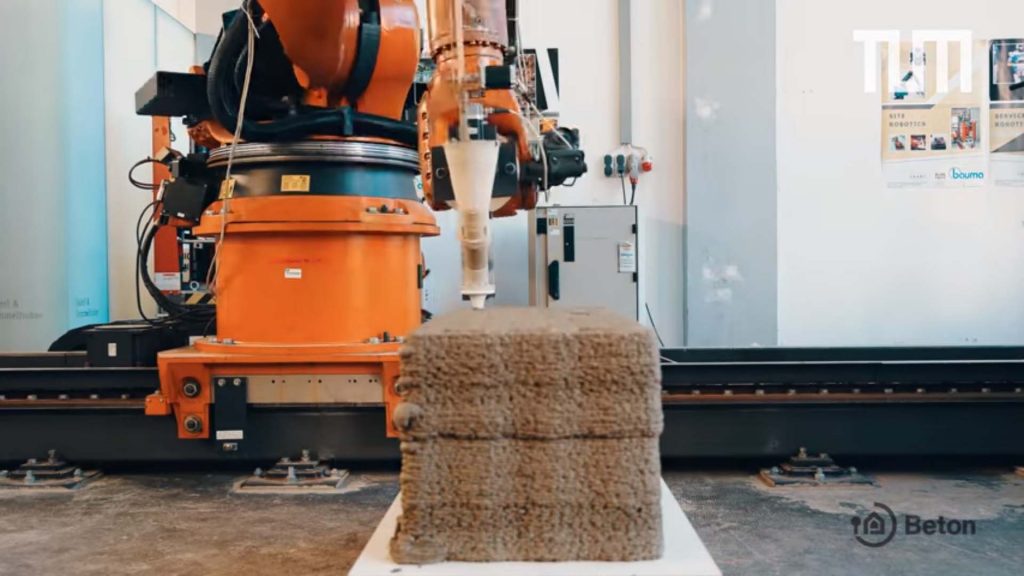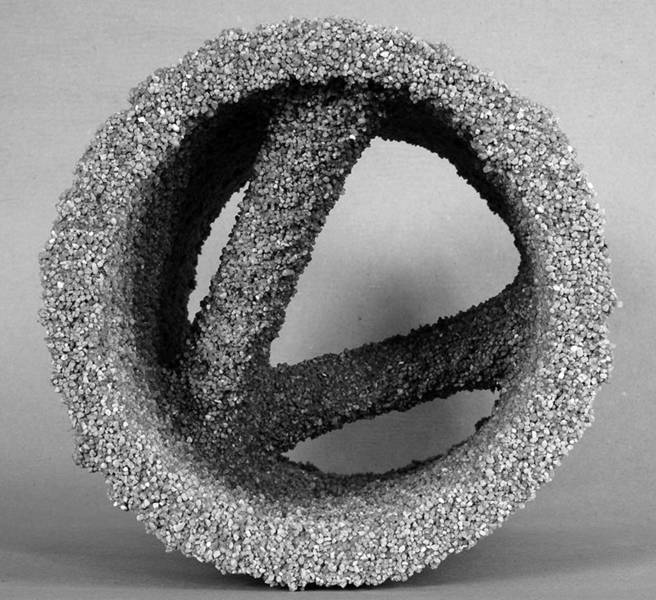As projects from the likes of Apis Cor, the IAAC, the U.S. Army and WinSun have proved, 3D printing is ripe for application in construction. In theory, in the future a robotic arm/gantry, water, and clay from the ground will be all the ingredients needed to build a house. Eradicating the high cost of labour and materials transport, 3D printed cement could transform home and shelter construction in remote locations and, by working 24/7, expedite build times. However, the technology still faces challenges to make it truly sustainable, and habitable.
Researchers at the Technical University of Munich (TUM) are investigating the value of various methods of 3D printing cement for construction.

Structural yet flexible
The first example of cement 3D printing at TUM is a process similar to contour crafting. In this method a robotic arm is used to write multiple layers of premixed cement. Other materials, like wood chippings, can also be added to the mix for added insulation/reinforcement. With this technique, TUM researchers have already managed to constructed a wall 1 meter high and 1.5 meter wide, and proved that it is just a resilient as the conventionally cast counterpart.

Building the impossible
A second example from TUM demonstrates a novel selective binding process. Instead of pre-mixed cement, this method works by depositing a mixture of cement and water onto a bed of loose sand. The mixture selectively binds the sand at the points it touches, giving the process a lot of flexibility. With a bed of sand large enough, this method could also enable the 3D printing of free-form overhanging structures – which would be something of a first for the technology.

The potential of TUM’s selective binding process is shown in the construction of an thin-walled concrete pipe with internal bracing. Such a shape would be impossible to creat with traditional methodology. Dr. Klaudius Henke, TUM Chair of Timber Structures and Building Construction, explains, “The design was inspired by the bone of a bird: Very thin and light, but still very stable.” It would be impossible to make it using traditional methods.
Transformation on the horizon
The next step for both processes is to scale them up. So far, TUM has gathered industry partners to help develop a selective binding cement 3D printer with several thousand nozzles. The capacity of the machine would be parts of approximately ten cubic meters in size, enough to create single storey-high components.
With first tests planned in 2018, Dr. Henke is understandably optimistic for the future. He says,
“3D printing will change architecture,”
“The technology not only allows more versatile shaping, but also more variety, since each component can be individually designed without incurring any additional costs.”
Nominations for the second annual 3D Printing Industry Awards are now open. Make your selections now.
For regular updates on the 3D printing world, subscribe to the free 3D Printing Industry newsletter, follow us on Twitter, and like us on Facebook.


